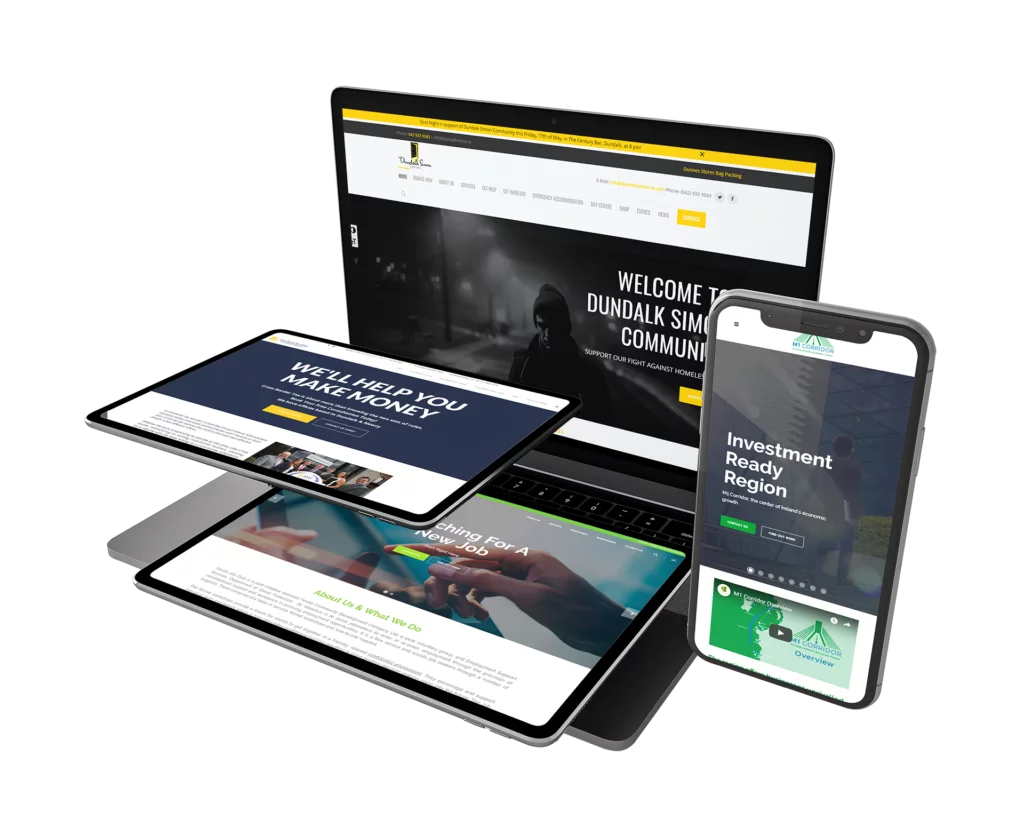Modern Website Layout That Catches Attention and Transforms
In a progressively digital landscape, modern-day web site design has actually arised as a pivotal variable in catching user focus and driving conversions. By tactically using visual power structure, receptive designs, and engaging interactive elements, designers can develop experiences that not only attract visitors yet likewise promote significant communications. Additionally, effective call-to-action methods play a vital role in assisting users toward wanted outcomes. As we discover these important parts, it becomes clear that comprehending their interaction can significantly affect an internet site's performance and user contentment. What are the key aspects that absolutely make a difference?
Importance of Visual Pecking Order
Visual power structure is an important element in web site design, as it overviews individuals' attention and improves their overall experience. By tactically organizing material, developers can direct individuals to the most important info initially, thus raising engagement and enhancing usability.
Incorporating a sensible flow in content setup is essential; as an example, placing one of the most crucial info on top of a page fosters instant acknowledgment. Consistent use of typography, such as differing font dimensions and designs, helps establish a clear content structure. This company not just help in navigating but also builds depend on, as individuals really feel more comfortable when they can easily discover what they are seeking.
Inevitably, a well-executed aesthetic hierarchy not only improves visual charm however additionally significantly impacts user habits. By focusing on crucial elements and guaranteeing a smooth experience, developers can efficiently transform site visitors into clients, strengthening the value of this fundamental style principle in modern site development.
Responsive Design for All Devices
Developing a smooth experience throughout different tools is essential in today's electronic landscape, where customers gain access to web sites from tablet computers, desktops, and smart devices alike. Responsive design is an essential approach that ensures internet sites adjust fluidly to various screen dimensions, orientations, and resolutions. By utilizing flexible grids, photos, and CSS media queries, developers can create formats that maintain aesthetic integrity and performance, regardless of the gadget being used.
The value of responsive style expands beyond looks; it directly affects customer engagement and conversion prices. A site that operates well on all devices motivates longer visits and minimizes bounce prices, as users are most likely to interact with material that is easy to browse. Additionally, search engines, especially Google, focus on mobile-friendly websites in their positions, making responsive style an essential component of seo (SEO)
Including receptive design not only enhances individual experience however additionally streamlines the development process. By producing a single site that works throughout gadgets, organizations can conserve time and sources contrasted to creating different mobile and desktop versions. Ultimately, responsive design is a fundamental technique for contemporary web site layout, ensuring accessibility and complete satisfaction for all users, despite their gadget.
Engaging Interactive Aspects
While a responsive style lays the foundation for a practical web site, integrating interesting interactive elements is crucial for capturing customer focus and promoting deeper connections. Website Design. Interactive elements, such as computer animations, tests, and clickable infographics, produce a much more dynamic user experience, urging site visitors to spend more time on the website
Including interactive look what i found functions can likewise guide customers with complicated information, making it easier to absorb material. As an example, interactive sliders can highlight item variations, while ingrained videos can provide demos or testimonies that resonate even more than static images or message. In addition, gamification methods, like rewards for engaging or finishing jobs with material, can boost individual inspiration and retention.
Efficient use interactive aspects not just enriches the user experience but can additionally result in greater conversion prices. By making interactions enjoyable and insightful, companies can cultivate a sense of loyalty and trust fund with their target market. It is vital to balance interactivity with performance; excessively intricate features may hinder website rate, negatively impacting individual satisfaction. Eventually, incorporating properly designed interactive aspects can dramatically raise an internet site's efficacy, driving engagement and conversions in today's competitive electronic landscape.
Streamlined Navigating Practices
Reliable navigating is a keystone of any kind of effective site, as it directly influences customer experience and web content accessibility. Structured navigating methods make certain that customers can quickly find information, enhancing their communication with the website. A well-structured navigation menu need to be straightforward and instinctive, generally featuring a minimal number of primary groups to prevent overwhelming site visitors.
To accomplish streamlined navigating, designers should focus on an ordered structure that realistically arranges content. Implementing breadcrumb trails can give individuals with context about their present location within the website, permitting seamless backtracking. In addition, using drop-down menus can successfully save area while still supplying accessibility to subcategories.
Receptive design is vital, as navigating ought to be functional across all tools (Website helpful hints Design). Mobile customers, specifically, benefit from touch-friendly food selections and collapsible areas that maintain functionality without endangering aesthetic appeals

Reliable Call-to-Action Techniques
A well-crafted call-to-action (CTA) is vital for directing customers toward preferred results on a web site, as it urges them to engage with material or purchase. To maximize their performance, CTAs must be clear, compelling, and strategically positioned throughout the site.
First, utilize action-oriented language that interacts necessity or worth, such as "Get going," "Sign up with Now," or "Claim Your Discount." This language not only encourages customers however also sets clear expectations about the next steps.
2nd, think about style components; CTAs should attract attention aesthetically via contrasting shades, sufficient whitespace, and famous positioning. A switch that is very easy to see and click boosts the probability of individual communication.
Additionally, individualizing CTAs based upon customer behavior or demographics can substantially enhance engagement. Tailored messages resonate a lot more with individuals, driving greater conversion rates.

Final Thought
These components jointly boost user experience, ensuring that site visitors remain engaged and inspired to explore material additionally. By prioritizing these design principles, services can substantially boost user retention and conversion rates, ultimately leading to better success in the electronic landscape.
In a progressively electronic landscape, modern-day site style has actually emerged as an essential element in capturing user focus and driving conversions.Aesthetic power structure is a crucial element in website style, as it overviews individuals' attention and boosts their overall experience.The value of receptive layout prolongs past aesthetic appeals; it straight impacts individual interaction and conversion prices.Integrating receptive layout not only boosts individual experience however additionally enhances the growth process. Inevitably, receptive layout is a basic strategy for contemporary site design, making certain access and fulfillment for all individuals, no matter of their gadget.
 Haley Joel Osment Then & Now!
Haley Joel Osment Then & Now! Jenna Jameson Then & Now!
Jenna Jameson Then & Now! Earvin Johnson III Then & Now!
Earvin Johnson III Then & Now! Soleil Moon Frye Then & Now!
Soleil Moon Frye Then & Now! Megyn Kelly Then & Now!
Megyn Kelly Then & Now!